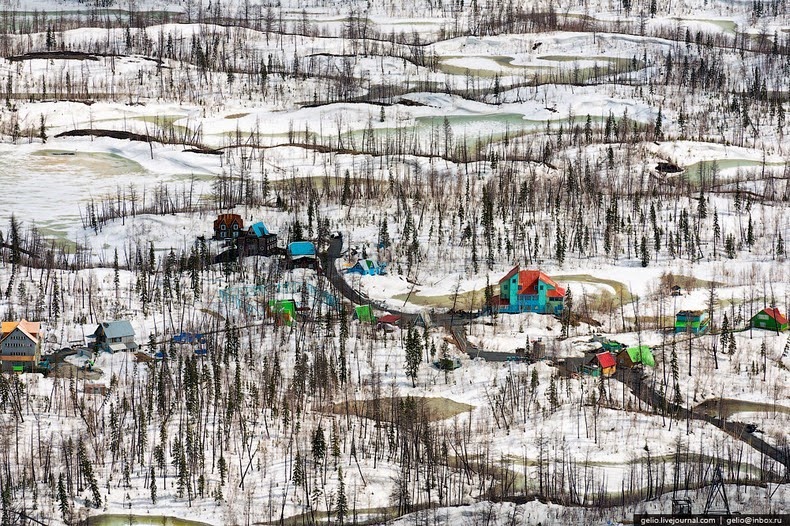Norilsk is an industrial city located in Krasnoyarsk Krai, in Russia. It is the northernmost city in the world with a population of 170,000 and the second largest city (after Murmansk) above the Arctic Circle. Norilsk is almost cut off from the world. It is connected by a railroad to only one city – the port of Dudinka. The only way to leave Norilsk is to then travel 2,000 km down the Yenisei River or by air. But due to bad weather a flight can be delayed for up to two weeks.
The city was founded in 1935, as a slave labor camp, and later as a settlement for those working in mining and metallurgic operation. Located at the foot of the 1,700-meter high Putoran Mountains, where occurs some of the largest nickel deposits on earth, Norilsk is a hotbed for mining and smelting industries. The city contains the world's largest heavy metals smelting complex, producing more than 20 percent of the world’s nickel, 50 percent of its palladium, more than 10 percent of its cobalt, and 3 percent of its copper. Norilsk’s exports make up more than 2 percent of Russia’s GDP.

The mines’ original workers were camp prisoners who were forced to work in the freezing cold under inhumane conditions. Out of the 500,000 forced laborers, 18,000 died of cold and starvation. Yet, many of those who interned and survived at Norilsk elected to stay there after the end of Stalinism to live and work in the mines they built.
Life in Norilsk is extremely harsh. The city lies in the continuous permafrost zone, where temperature drops to -30 degrees centigrade in the winter. Between November and January, for a period of seven weeks, there is no sun. During summer, temperature rises briefly to 20 degree centigrade, but that’s not enough to completely melt away the snow.
But Norilsk’s biggest problem is pollution. Nearly 4 million tons of copper, lead, cadmium, nickel, arsenic, sulphur and other toxic chemicals are released into the air annually. Snow is black, and sometimes yellow, or even pink in addition to white, and acid rain covers a surrounding expanse the size of Germany. The amount of sulfur dioxide in the air is so high that there is no vegetation in an almost 20-mile radius, and the rare berries or mushrooms that grow here have high toxicity. The soil is so contaminated that it is now economically feasible to mine it.
The average life expectancy of the workers is ten years shorter than the national average. Residents suffer from numerous respiratory diseases, and the incidents of cancer, blood and skin disorders is high. Only 4% of adults in the city are healthy.
it's obvious that those who live and work in Norilsk do so for the money, but even those who voluntarily came here to make money are eager to escape. But leaving the city is not easy, especially for the older residents on pension, and with a family and apartment. Property prices are low in Norilsk, which means they cannot sell and leave the city, because even if they did, it’s impossible to buy anything with the money in other regions.
They live, work, spend and reproduce for the mining company. The town's isolation means they pour their wages into company-owned shops and facilities. The money goes back to the company, and eventually people pass away.
























No comments:
Post a Comment